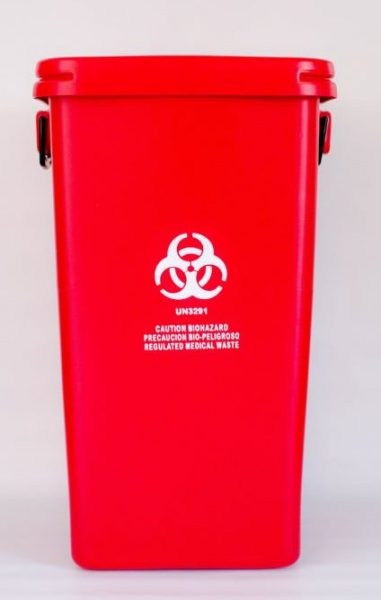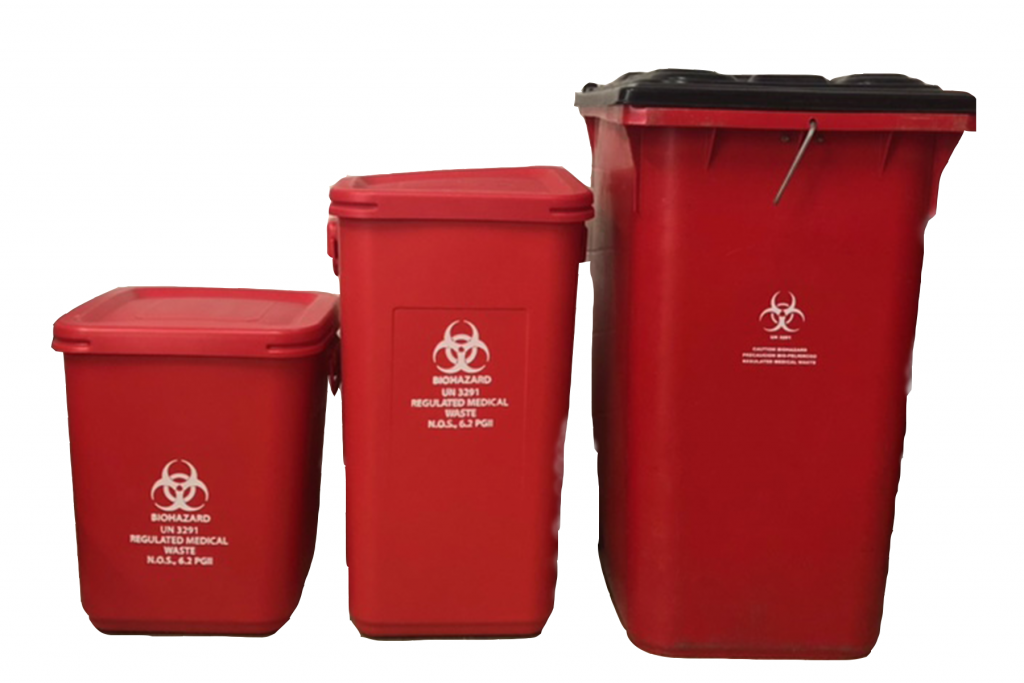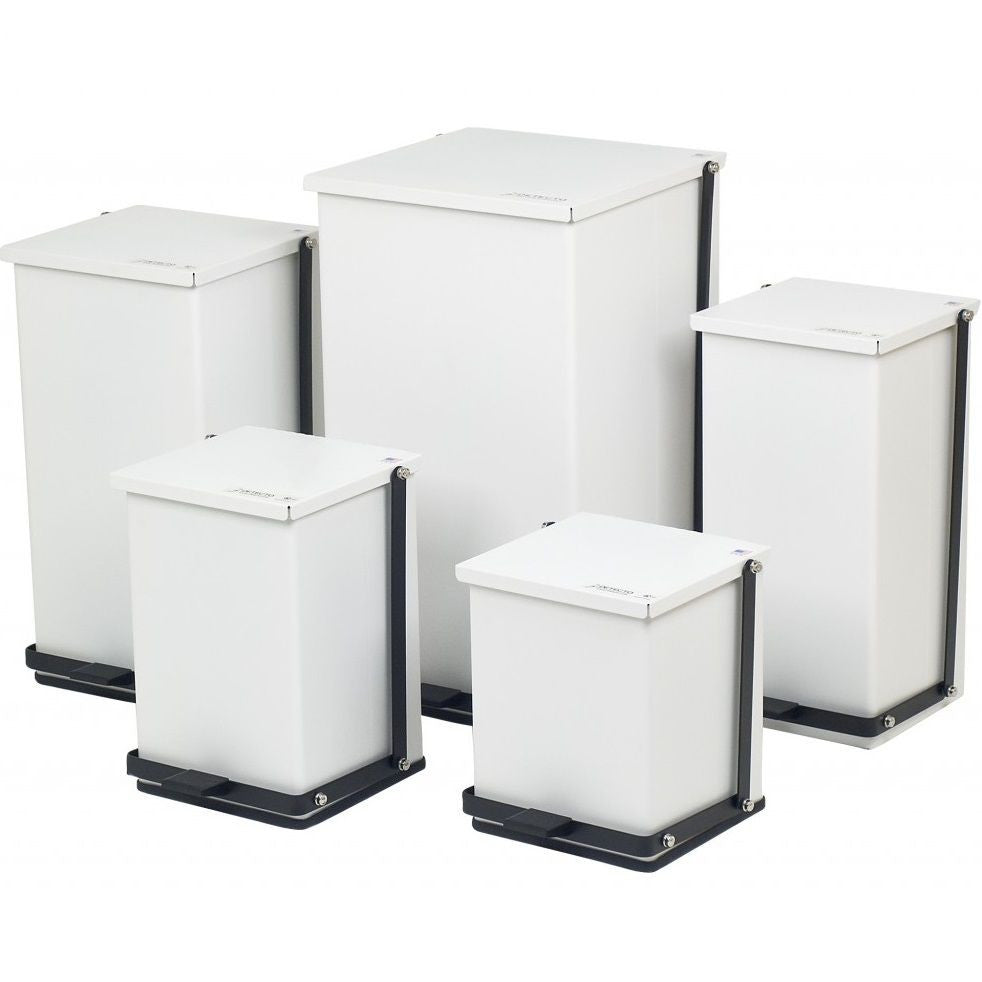Shielding Health And Wellness: Specialist Medical Waste Removal Services for a Clean Atmosphere
Shielding Health And Wellness: Specialist Medical Waste Removal Services for a Clean Atmosphere
Blog Article
Efficient and Eco Friendly Medical Garbage Disposal Solutions
In the ever-evolving area of healthcare, the problem of clinical waste disposal remains a topic of extremely important significance. As hospitals, clinics, and various other health care facilities make every effort to provide high quality person care, they need to additionally deal with the difficulty of efficiently and sensibly disposing of their waste.
Waste Partition Practices
Effective waste segregation methods are important to guarantee the proper and risk-free disposal of medical waste. Clinical waste, which consists of products infected with possibly transmittable substances, have to be managed in a method that lessens the threat of injury to both public wellness and the setting. Correct waste segregation plays a critical duty in achieving this goal.
Waste partition entails the splitting up of various kinds of waste based upon their attributes and potential threats. This procedure makes certain that each kind of waste is dealt with and thrown away suitably (medical waste disposal services with WasteX). It begins at the point of generation, where healthcare centers need to have assigned bins and containers for various waste categories, such as sharps, transmittable waste, pharmaceutical waste, and non-hazardous waste
By setting apart medical waste at the resource, health care companies can prevent cross-contamination and lower the threat of direct exposure to infectious representatives. This practice likewise facilitates the recycling and healing of certain materials. Segregating and reusing clean plastics and glass minimizes the need for raw materials and lessens the environmental effect of clinical waste disposal.

Autoclaving and Sterilization Methods
In order to guarantee the proper and secure disposal of medical waste adhering to efficient waste partition practices, medical care facilities need to employ autoclaving and sanitation strategies. Autoclaving is a commonly used technique that makes use of high-pressure heavy steam to decontaminate medical waste.
One more commonly utilized sanitation technique is chemical sterilization. This entails treating the waste with chemicals such as ethylene oxide or hydrogen peroxide, which eliminate microbes by disrupting their mobile framework. Chemical sterilization is typically used for heat-sensitive products or products that can not hold up against the heats of autoclaving. It is important to note that chemical sterilization needs proper handling and disposal of the chemicals utilized, as they can be harmful to human wellness and the setting if not managed correctly.
On-Site Waste Therapy Equipments
Health care centers have actually implemented on-site waste therapy systems to address the disposal of clinical waste in a secure and reliable way. These systems give a cost-efficient and hassle-free option for handling medical waste generated within the facility. On-site waste therapy systems use different innovations to treat and dispose of medical waste on-site, minimizing the need for transport to off-site centers.
One commonly utilized on-site waste therapy system is the microwave modern technology. This technology makes use of microwave power to sanitize and sanitize clinical waste, minimizing its volume and rendering it secure for disposal. One more system is the chemical disinfection modern technology, which includes treating medical waste with chemicals to kill virus and decrease its hazardous nature. This approach is especially effective for liquid medical waste.
They get rid of the risk of clinical waste being messed up during transport, lowering the capacity for contamination and exposure to hazardous materials. On-site therapy systems decrease the total ecological effect of medical waste by decreasing transport and the need for landfill space.
Recycling and Repurposing Initiatives
As healthcare facilities strive for sustainable waste management practices, they are progressively exploring recycling and repurposing initiatives as a means of reducing the ecological influence of clinical waste. Recycling and repurposing initiatives involve finding innovative means to reuse or transform clinical waste right into new products or materials. This not just aids to lessen the volume of waste that ends up in incinerators or garbage dumps however likewise decreases the consumption of resources and power required for producing brand-new products.
One instance of reusing in the healthcare sector is the reprocessing of single-use clinical gadgets. These gadgets, such as surgical instruments or catheters, are usually discarded after a solitary use. However, developments in technology and rigorous sterilization procedures have actually made it possible to securely clean, disinfect, and recycle these gadgets numerous times. This not only minimizes the amount of waste produced but likewise conserves healthcare centers significant expenses related to buying brand-new devices.
An additional recycling effort includes the recycling of plastic containers, such as drug bottles or syringe cases. These containers can be accumulated, sorted, and sent to recycling centers where they are refined, melted down, and transformed right into brand-new plastic items. This helps to save sources and reduce the demand for virgin plastic production.
Along with reusing, repurposing campaigns involve finding alternate usages for clinical waste. As an example, shredded paper waste from medical documents or packaging materials can be repurposed as bed this website linen product for pets or as insulation product (medical waste removal service). Similarly, organic waste such as food scraps from health care centers can be composted and look these up utilized as fertilizer in gardens or agricultural fields.

Renewable Energy Solutions
One effective approach to reducing the environmental effect of healthcare operations entails implementing eco-friendly power services. Healthcare centers, such as medical facilities and clinics, eat substantial quantities of energy for various objectives, consisting of lighting, home heating, cooling, and operating clinical devices. By transitioning to sustainable energy resources, these facilities can considerably lower their carbon impact and add to a more lasting future.

Applying renewable resource remedies in healthcare facilities not just decreases greenhouse gas discharges yet additionally offers long-lasting expense financial savings. While the preliminary financial investment in renewable resource infrastructure may be higher, the long-lasting operational expenses of sustainable power systems are significantly lower compared to conventional fossil fuel-based energy sources. Furthermore, renewable resource systems are reputable and can supply a uninterrupted and secure power supply, ensuring constant Related Site health care solutions even during power failures or emergencies.
Conclusion
In final thought, implementing effective and environmentally pleasant clinical waste disposal solutions is necessary for maintaining a lasting healthcare system. By embracing waste partition practices, autoclaving and sanitation techniques, on-site waste treatment systems, reusing and repurposing initiatives, and sustainable power services, health care centers can considerably lower their environmental effect.
It begins at the point of generation, where health care facilities need to have designated bins and containers for various waste groups, such as sharps, infectious waste, pharmaceutical waste, and non-hazardous waste.
In order to make sure the secure and correct disposal of clinical waste complying with effective waste partition techniques, medical care centers need to use autoclaving and sterilization techniques.Health care centers have actually implemented on-site waste treatment systems to attend to the disposal of clinical waste in a effective and risk-free way. On-site waste therapy systems make use of different innovations to treat and get rid of of clinical waste on-site, decreasing the requirement for transport to off-site centers.
As medical care centers make every effort for lasting waste management practices, they are increasingly exploring recycling and repurposing initiatives as a means of decreasing the environmental impact of medical waste. - medical waste removal
Report this page